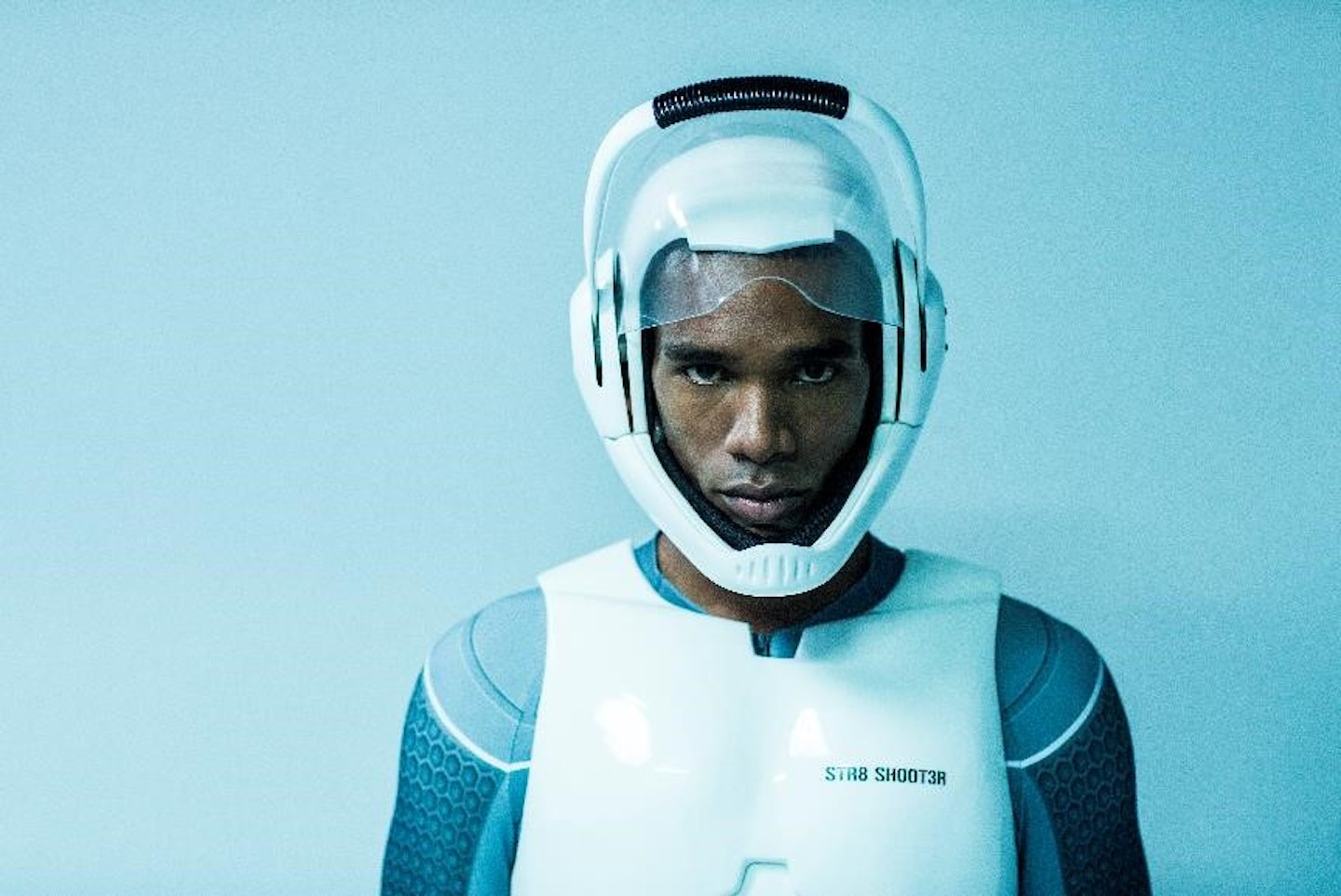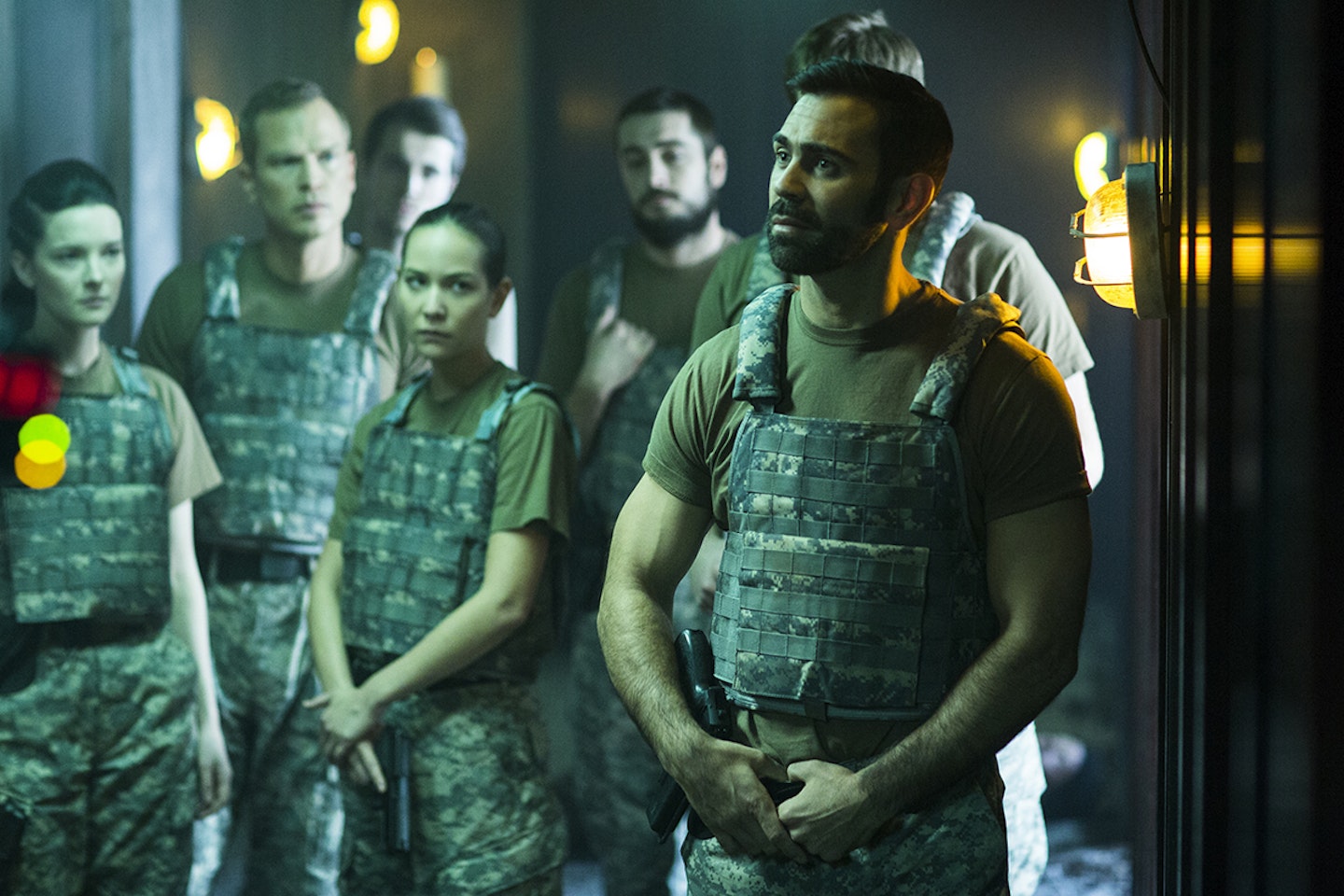This week’s other sci-fi release is The Call-Up, a relatively low-budget British film with a clever premise. Eight expert gamers are lured along for chance to play a new game with a huge cash prize. What they don’t realise, however, is that the futuristic suits they put on for the demonstration can actually kill them – so if they die in the game, they die for real. The script headed the Brit List in 2011, and drew in young stars like Into The Storm’s Max Deacon and Love & Friendship’s Morfydd Clark. We visited the film’s set – a car park in Birmingham, because filmmaking is not all glamour and red carpets – to talk to writer-director Charles Barker and find out more. It’s his first film, but seasoned by a successful career in advertising he’s looking relatively relaxed as we sit down for a chat...

This script has been around since 2011 so it’s taken a while to get going.
It's been quite a journey. I explained the concept to people and they didn't really get it. We had to make a promo and that's how we got the funding, because it is a unique concept that we were lucky enough to be the first to come up with.
How did you develop the idea?
I play shoot 'em up games a bit, but it was really the idea of the outfit, the idea of being trapped in a helmet that you couldn't get off. It will kill you if you didn't stay in the game, and it was finding a scenario for that. So I went for Call of Duty, Medal of Honor type ideas for the game. It's all kind of future-now, based on things like the Oculus Rift but darker. It's the fact that you're trapped in this very real outfit that is giving you an incredible experience that is more real than life. The characters in the story are trapped between a nightmare shoot-'em-up that kills you, and in the real world a helmet and this suit that kills you as well. So there's great tension because they're not safe in either world, and they just have to push on forward and struggle through the levels to get out. But the story structure has much more to do with film than video games. I wanted to do was use videogame logic and story ideas as a starting point, but it's 100% a movie, and it has movie set pieces.
Has it been a challenging shoot?
We have to shoot reality and the world of the game, so we have edit points between the two. We have this device of a visor that can be raised or lowered that brings us back and forth between the real world and the game, all the way through. So we have to be really sure what hand they're using to raise the visor [of the gaming suit in the real world] and use the same one in the game. The continuity woman is earning her money on this job!

What kind of tone are you shooting for?
It's a sci-fi thriller, but I suppose the element that interests me most is the psychological horror aspect of just being in this waking nightmare. My reference would be Jaws. When they're in the real world there's this shark that's circling them, this world that's invisible but threatening. There's jeopardy throughout.
So with the two worlds, does that mean a lot of VFX?
We're trying to do everything in-camera so there’s lots of real machine-gun fire and prosthetics. One of my favourite thriller-horrors is The Thing, the Carpenter one, and even though this one is a film about computer games and CGI, everything is practical. The suits are designed by the same guy, Robert Allsopp, who did The Martian for Ridley Scott, and the helmets are almost like an Alien facehugger. Our protagonists pick up these things, they put them on, and then they're trapped.
There were lots of influences. I liked the idea of the fetishisation of technology, so I tried to get something that's both really seductive and slick and cool but also slightly creepy. So it's got a spine to it, and it has clamps and wheels turn. There's a level of computer graphics over the real world, but we wanted to make it as tactile and logically believeable as possible.
What about the characters?
I had two sets of characters, the Betas and the Alphas. It's kind of about how people behave under pressure, so there's the Alpha bully who turns into a monster, and the super soldier who isn't quite so super. The fantasy that people have when they play something like Call of Duty is that that's how they'd be in real life. You'd go out there and kill all comers and be brave. But actually if your life was at stake, you'd be a snivelling, crying coward. You'd be all too human! So I've got more vulnerable characters who have to pluck up the courage or die, and that's the fun element to it. It's taking somebody who's always had this fantasy and putting them into that world where they have to play for high stakes.
What about the look of the film? Was it deliberately heightened to give a very sterile look and then something much grimier?
Yes, the real world is very sterile, very slick, and we've shot that in a very controlled way. The game world is gritty and hand-held and much more claustrophobic. It's almost like shooting two movies side by side, but you get the spark between the two, between this very white sterile world and they're suddenly plunged into this nightmare. They come up for air again in the sterile world.
Do you have a sequel in mind? Will there be an extended universe?
I'd love to! The big budget option would be a sort of Westworld; I'd love to elevate this so it goes wrong in a theme-park type way.
The Call-Up is released on 20 May
%20Web%20Res.jpg?ar=16%3A9&fit=crop&crop=top&auto=format&w=1440&q=80)